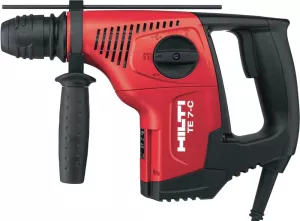Hammer drill: characteristics and applications
A hammer drill is one of the most practical and most commonly needed pieces of equipment in construction and renovation work. When a normal drill is not enough (e.g. if you need to drill a larger hole in a hard material such as concrete or brick), it may be necessary to equip yourself with a hammer drill. What are the main features of a hammer drill and for which jobs can it be used?

The hammer drill with impact and forging function is perfect for both domestic and heavier work. The powerful hammer, adjustable chisel position and 3 work functions offer a wide range of applications. These include the ability to drill holes for cans with a core cutter, as well as non-impact drilling in wood or steel. The machine also allows dust-free drilling with the drill bit extraction system (DRS-M). Comfort is guaranteed by the non-slip finishes and the D-shaped handle, while the low weight (4 kg for the hammer drill in the Ramirent range) allows easy carrying and handling.
The main advantage of using a hammer drill is, first and foremost, that it can handle a wide variety of jobs, including heavier and more advanced ones. Standard hand tools or those with low power cannot cope with difficult ground. Meanwhile, multifunctional hammer drills can be used not only for drilling holes in concrete, brick, wood or steel, but also for forging in all sorts of materials. This variety will enable you to carry out more demanding jobs for which a classic drill will be insufficient.
